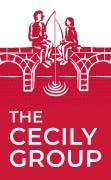
It’s often assumed that children will one day take over the family business. They’ve grown up with it. It’s familiar. In many cases, it’s expected. But is continuing the family legacy always the best option? What does research suggest, and are there other ways to define success?
Transitions between generations are highly personal. While many banks and advisors present standard solutions, families are anything but standard. What works for one may not work for another. In fact, studies show that trying to apply “templates” to succession can backfire. As Erdogan, Rondi, and De Massis (2019) explain, family businesses are constantly managing the “tradition and innovation paradox”—the need to honour legacy while adapting to a changing world.
When Taking Over the Family Business Works
If done right, succession within the family can be a strong force for continuity. This is often described as the “stewardship model,” where successors see themselves as caretakers of the legacy.
But for this to succeed, several things must align:
- The successor is genuinely motivated, competent, and seen as legitimate.
- The current leader is ready to let go.
- The wider family and key stakeholders support the transition.
- Governance structures are in place to avoid the misuse of company resources.
- There is a sense of shared values, vision, and oversight.
“Tradition involves the accumulation of know-how, symbolic and cultural content, and micro-institutions of practice handed down across generations”
— Magistretti et al., 2020
In other words, legacy is more than the name or company: it’s an embedded knowledge system. If that system is passed on with care and clarity, continuity becomes meaningful.
Why It Sometimes Doesn’t Work
Still, most family firms don’t make it past the third generation. Common problems include:
- A lack of qualified or interested successors.
- Emotional expectations overriding business logic.
- Internal power struggles or stakeholder disagreement.
- Misallocation of company resources for family benefit.
- Poor oversight and unclear accountability.
When tradition becomes too rigid, it can limit innovation or cause successors to feel trapped rather than inspired.
“Tradition provides a distinct and unique bundle of resources that are potential sources of competitive advantage, yet also a boundary to their discretion to change.”
— Erdogan et al., 2019
The Entrepreneurial Mindset as a Success Strategy
An increasingly popular alternative is to nurture entrepreneurship within the family, even if it leads the next generation away from the original business.
This approach values flexibility over uniformity. Children are encouraged to explore their own paths, backed by family values, capital, and support. These ventures can complement the family legacy in new ways—be it through innovation, philanthropy, or new industries.
“Because of past knowledge interiorization and reinterpretation capabilities, firms are able to release the potential advantages of tradition in terms of value creation and capture.”
— Magistretti et al., 2020
Here are a few ways to foster this mindset:
- Encourage children to try low-stakes entrepreneurial projects early on.
- Teach them how to assess and manage risk.
- Offer financial support, emotional support and mentorship, not just money.
- Normalise failure as part of growth and experimentation. Map out worst-outcomes before you start.
- Create a plan for how the family supports (and benefits from) individual initiatives.
This path doesn’t have to mean abandoning the original business. In some cases, the business continues under professional management, while the family grows in other directions. Having multiple revenue streams not only supports entrepreneurial ambitions but also strengthens the family’s overall economic resilience. It helps prevent wealth fragmentation, supports diversified growth, and reduces risk exposure tied to a single industry or venture.
Keeping Ownership, Changing the Model
The best solution might not be “either/or.” Many families choose to keep ownership while hiring external management, allowing the business to thrive with expert leadership while family members pursue other goals. But a family also needs to be aware that this professionalisation also leads to additional and new complexities that need to be carefully managed by the family. One such complexity may be a loss of direct influence and the ability to make use of company assets or capabilities with impunity.
This hybrid approach:
- Retains legacy and values.
- Maintains financial continuity.
- Reduces pressure on family members to “fit a mold.”
- Encourages a portfolio mindset.
“Solely sticking to tradition would result in losing competitiveness, and exclusively pursuing innovation would erode their core and distinctive legacy.”
— Erdogan et al., 2019
A Living Plan, Not a Fixed Rule
Whatever path is chosen, it’s essential to develop a succession plan that evolves over time. It should be reviewed regularly, adapted as circumstances change, and be inclusive of all stakeholders.
Success might look like a smooth handover to a family leader. Or it might mean building a next-generation enterprise with the same values but a different form. Either way, insisting on only one outcome can be more damaging than letting go.
“Tradition should not be regarded as inertia for innovation, but rather as an opportunity”
— Magistretti et al., 2020
Conclusion
The question isn’t whether it’s better to take on the family business or start something new. The real question is: what does your family want, and how can you prepare for that with intention, structure, and an open mind? Success lies in understanding your strengths, weaknesses, and preferences, and using that clarity to define your own path, not following someone else’s template.
References:
Erdogan, I., Rondi, E., & De Massis, A. (2019). Managing the tradition and innovation paradox in family firms: An imprinting perspective. Entrepreneurship Theory and Practice, 43(1), 20–40. https://doi.org/10.1177/1042258718796089
Magistretti, S., Dell’Era, C., & Verganti, R. (2020). Innovation through tradition in design-intensive family firms. Journal of Knowledge Management, 24(4), 820–838. https://doi.org/10.1108/JKM-07-2019-0399
